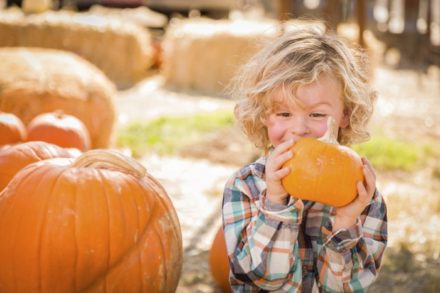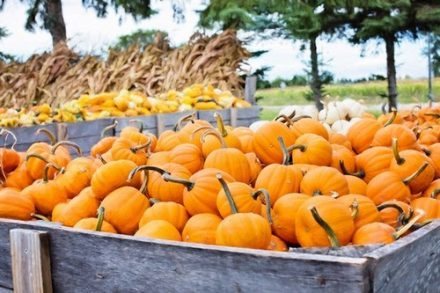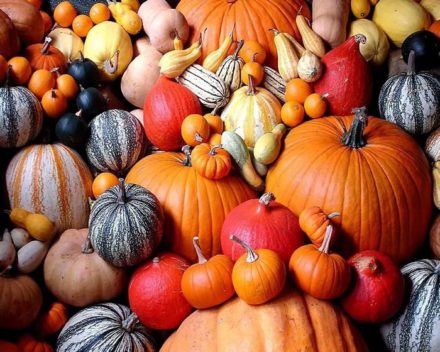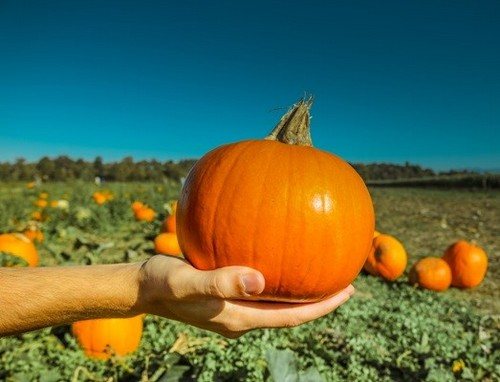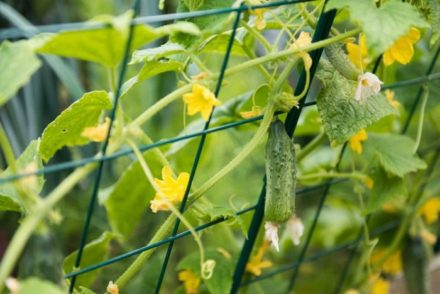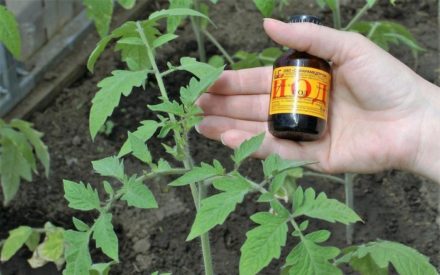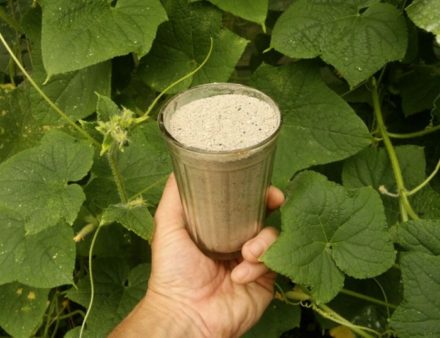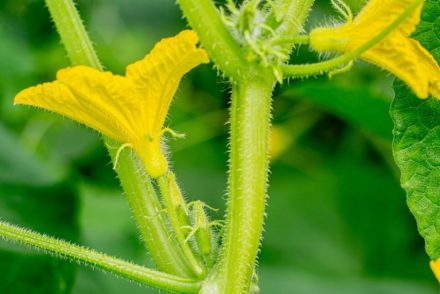In temperate climates, the pumpkin must be shaped so that the fruits can fully ripen. After several ovaries appear on the bushes, the shoots are pinched. In this case, the plant will direct all its energy to the formed fruits, without wasting nutrients on maintaining and feeding the stems and leaves. Formation will give a positive result if it is carried out correctly.
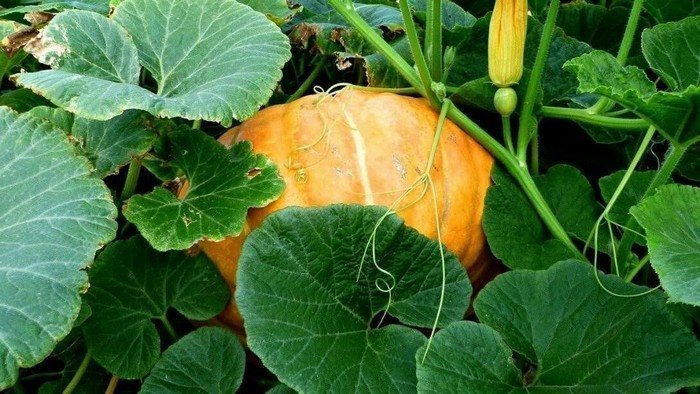
Timing of the procedure
During growth, pumpkin forms a large volume of vegetative mass, so it is often grown in open ground so as not to take up much space in the greenhouse. Some summer residents treat this crop with some disdain, believing that the harvest will be obtained even in the absence of care and formation.
The unpretentious pumpkin really grows very quickly, but there may be problems with fruiting. If the bush is not formed, there will be a lot of ovaries, but only a few of them will develop into full-fledged pumpkins. The plant simply does not have enough strength and time to produce a large harvest.
Pumpkin can grow freely and bear fruit well only in the southern regions. You should start pinching the shoots as soon as the insects pollinate the ovaries and the fruits begin to increase in size. Typically, gardeners begin to form at the end of July or in the first half of August.
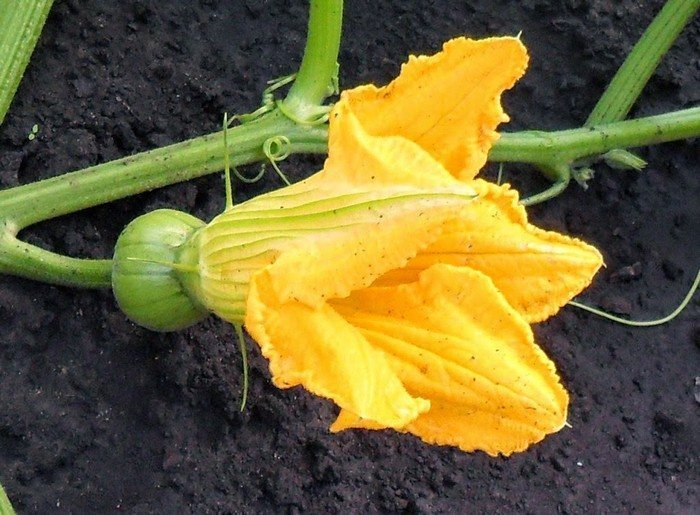
Pinching depending on the variety
Large-fruited and small-fruited pumpkins are formed differently.The larger the pumpkin, the more nutrients are required for its growth and accumulation of sugars. In order for the fruit to fully ripen, the shoot is pinched after 4-6 leaves appear above the large-fruited pumpkin variety. This volume of green mass is enough to “feed” the ripening fruit.
For a variety that produces small fruits, the criteria are slightly different. You can leave 2-3 leaves above each remaining ovary. If the variety is unknown, you need to choose an intermediate option, leaving 4 leaves. Then the pumpkins will ripen completely in any case. You can pinch the shoots by hand, but it is better to use pruners or scissors for this so that the cut is neat and heals quickly.
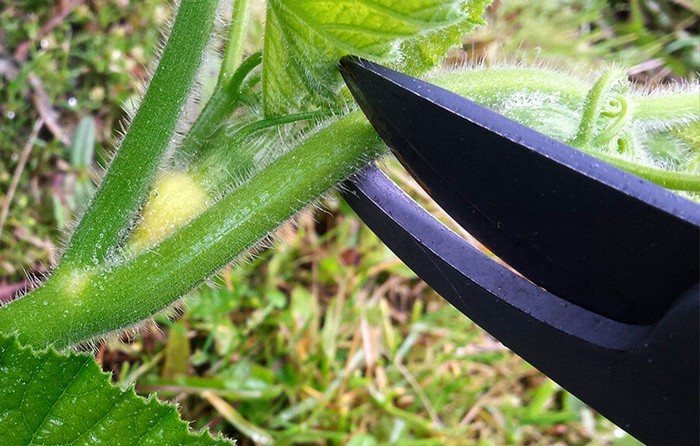
Rationing of ovaries and shoots of climbing pumpkin
The bush must be rid of not only excess green mass. The number of ovaries also has to be normalized. If this is not done, then before the cold weather arrives the pumpkins will not have time to ripen and the summer resident will be left without a harvest.
On each vine, 1 ovary is left for large-fruited varieties, and 2-3 ovaries for varieties that produce small pumpkins. The number of lashes that need to be left also varies depending on the variety.
Large-fruited pumpkins (weighing over 5 kg) are formed into 1-3 lashes. If only one main shoot is left, it is permissible to leave 2-3 ovaries on it. When formation is carried out in 3 stems, each of them should have only one fruit.
On varieties with miniature fruits weighing 1-1.5 kg, you can leave up to 5 lashes. The total number of pumpkins in this case should not exceed 10-12 pieces on one plant.On bushes of a medium-fruited variety, 4-8 developing ovaries are left (1-2 on each vine).
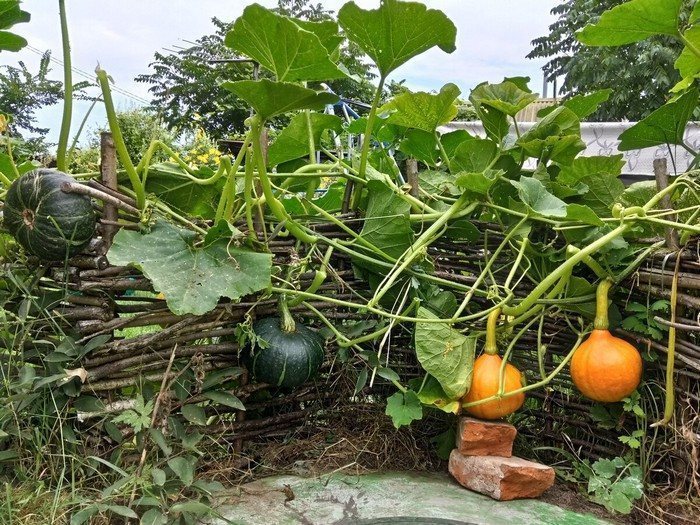
Formation of bush varieties
A bush pumpkin has a more compact size, but this does not mean that it does not need to be shaped. As soon as the first ovary is formed and begins to develop, the main shoot is pinched.
There should be no more than 4 fruits per plant. If you do not follow this rule, there will be a lot of pumpkins, but they will all turn out to be small and tasteless. Excess shoots and leaves are removed from the plant, making the crown sparse so that it is blown with air and illuminated by the sun.
In the second half of August, all growth points on the bushes are pinched so that nutrients flow exclusively to the fruits. If after formation the ovaries appear again, they are plucked out.
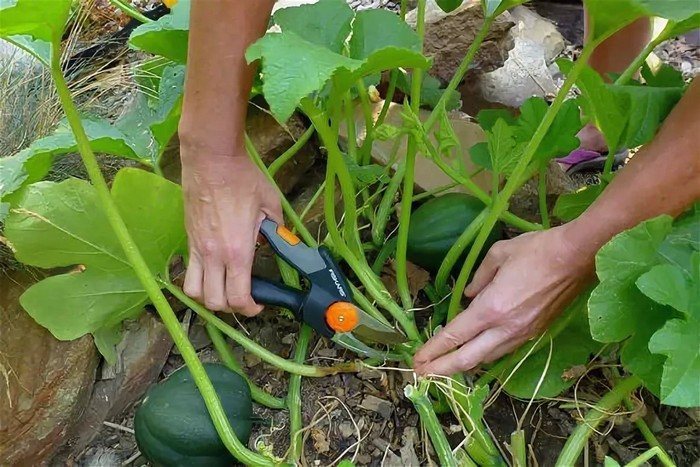
Carrying out stepsoning
As soon as the tops of the lashes are pinched, the bush will begin to actively branch, forming side shoots (stepchildren). The branches must be cut out immediately, preventing the pumpkin from becoming overgrown. Stepchildren do not form fruits, and there is no need for this; the required number of ovaries has already been left. If you do not carry out pinching, the bush will again waste the incoming nutrition irrationally.
But there is no need to rush into trimming the leaves on the remaining shoots. Over time, they will disintegrate on their own, allowing the sun to reach the fruits. If this does not happen, 1-2 leaves can be cut off. Do not forget that it is thanks to photosynthesis occurring in the leaves that the entire plant is nourished.
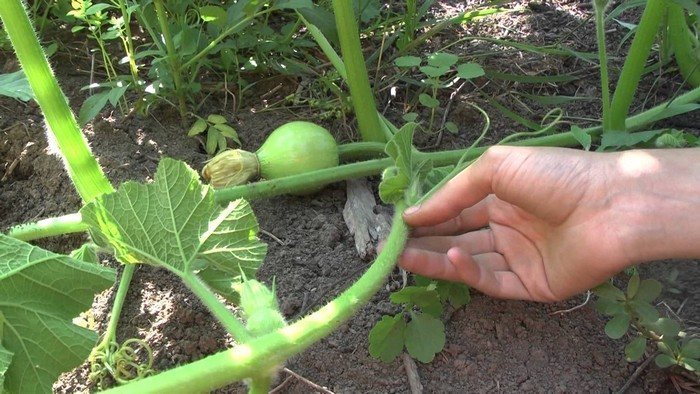
Shaping a pumpkin not only ensures the quality of the harvest.This procedure also has other advantages. Thanks to timely pinching, the area of the plot is saved, the consumption of fertilizers is reduced, the plants are well ventilated and do not get sick.


